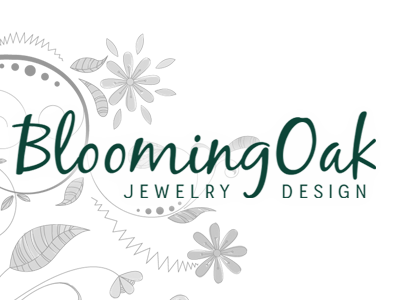There is no definitive source for the assignment of gemstones as individual birthstones but there are a number of legends:
- Mythical Birthstones are said to come from the ancient Tibetan culture and date back thousands of years.
- Biblical Birthstones were mentioned in the Bible's Old Testament suggesting that the twelve birthstones can be traced to the twelve tribes of Israel. In the Bible, the breastplate of Aaron was said to be a religious garment worn by Aaron during religious ceremonies and was said to have twelve gemstones embedded within it, each representing one of the Israeli tribes.
- Ayurvedic Birthstones date back to ancient Indian culture and those who believed that specific stones have medicinal effects.
- Zodiac Birthstones have evolved over thousands of years as astrologers have assigned gems of certain colors to the twelve signs of the zodiac to represent the power of the planets.
- Modern Birthstones closely derive from the biblical birthstone system, though they have evolved considerably. At some point, poems were developed naming the stones for each month according to the Gregorian calendar. This became the basis for the traditional birthstone system used by most English-speaking societies. In 1870 Tiffany & Co published a pamphlet with the birthstone calendar poem and listed the stones for each month.
In 1912 the National Association of Jewelers met in Kansas to officially adopt a birthstone list in an attempt to standardize the birthstone system and provide more affordable and readily available gemstones that could be purchased by everyday Americans. Some of the months were given multiple stones, with less expensive, more attainable options added in addition to the traditional or more expensive gemstones.
In 1952 the Jewelry Industry Council met and further updated the list. Their updates included adding more gemstone options to some months, specifying the color of another, and completely replacing a few gemstones.
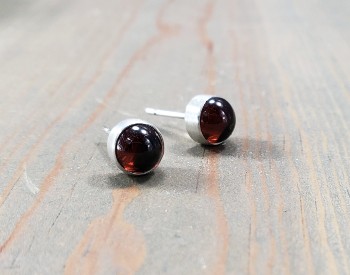 January
January
Garnet is the only official birthstone for January. Garnet is derived from the Latin word garantum meaning “seed” because the crystals resemble the red color from the pomegranate fruit. While most commonly red, garnet actually refers to a group of minerals that are found in many different colors from red to green to purple.
Garnets have been worn in jewelry for centuries. Garnet is love and vitality, eternal friendship, trust, loyalty and protection from harm.
February
February has only one official gemstone: amethyst. Amethyst, a type of quartz, is found throughout the world and gets its purple coloring iron or manganese compounds. Amethyst is routinely heated to bring out a deeper purple color. An Amethyst’s color can range from a faint violet/mauve to a rich deep purple. 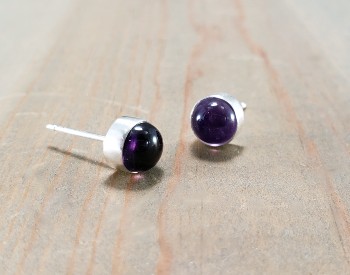 Amethyst is commonly associated with meditation, peace, courage, inner strength and clarity of mind.
Amethyst is commonly associated with meditation, peace, courage, inner strength and clarity of mind.
March
Chronologically, March is the first month to have more than one official birthstone. The more traditional birthstone is bloodstone while aquamarine is now considered the primary birthstone and is more popular.
The word Aquamarine is derived from the Latin word "Aqua", meaning water and "Marina" meaning the sea. Aquamarine is the blue variety of Beryl. It’s a popular stone because of its gorgeous pale blue-green tones. Aquamarine is most often light in tone and ranges from greenish blue to blue green; the color usually is more intense in larger stones, and darker blue stones are very valuable. This gemstone is mined mainly in Brazil but also is found in Nigeria, Madagascar, Zambia, Pakistan, and Mozambique.
Aquamarine is said to protect all who travel by or near the water. Its beautiful, serene color is said to be calming, releasing of fear and bringing clarity.
April
Diamond is the sole birthstone for April. Diamond is thought to be the hardest natural mineral on the planet and approximately 80% of the world’s diamonds are used for industrial purposes. The word diamond comes from Greece. They called the gemstone adamas, using the same word they used for any unbreakable or indestructible substance. Diamonds are available in just about every color from the classic clear or white diamond to black diamonds. Diamonds are commonly associated with eternal love and commitment, and they are traditionally the trademark stone of engagement rings. Diamonds are said symbolize romance, courage and provide clarity, balance and inner strength.
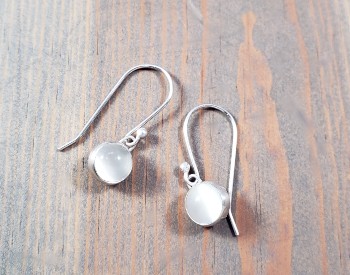 May
May
Emerald is May’s traditional only birthstone. The word emerald is derived from the Greek word smaragdus that means green. Emerald is a form of beryl. Modern emeralds are commonly sourced in Zambia, Brazil, Colombia, and Afghanistan. Emerald is thought to symbolize rebirth and hope and provide its wearer with youth, vitality, and good fortune.
June
Three birthstones mark June birthdays: pearl, moonstone and alexandrite.
June’s traditional birthstone is pearl – unique because it is the only birthstone that is not actually a stone. Formed in living mollusks when a sand particle or fragment of rock is trapped in the shell and irritates the mollusk inside. The mollusk coats the sand particle with many layers of shell material to prevent it from irritating it further. Pearls are used in all types of jewelry and range in cost from inexpensive to dear.
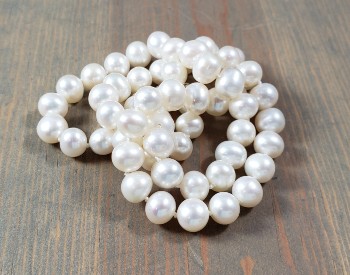 Alexandrite is a relatively recently discovered gemstone, discovered in Russia in 1831. It is named after Czar Alexander II who was in power when the stone was discovered. Rare, Alexandrite displays interesting color properties. It can appear green, purple or red in different lighting conditions. In its natural state, Alexandrite is incredibly expensive. It is often sold in its man-made version.
Alexandrite is a relatively recently discovered gemstone, discovered in Russia in 1831. It is named after Czar Alexander II who was in power when the stone was discovered. Rare, Alexandrite displays interesting color properties. It can appear green, purple or red in different lighting conditions. In its natural state, Alexandrite is incredibly expensive. It is often sold in its man-made version.
Moonstones were named by the Roman historian Pliny who contended that the stone changed in appearance with the phases of the moon. While this is not true, moonstone does seem to change as the light hits it differently. This occurs because moonstones are formed from two varieties of feldspar that each react slightly differently to light. The result is a phenomenon called adularescence. Moonstones come in a variety of colors including blue, green, peach, and champagne.
Moonstones are said to possess properties which grant the wearer good fortune. Moonstones are most often source in India, Myanmar, Australia, Madagascar, and the United States.
July
July has just one birthstone: ruby. Extremely durable, ruby is the second hardest and strongest gemstone (after diamond).
Ruby is of the gem variety corundum (as is sapphire). Rubies are most valuable when they are a medium to medium-dark, vivid red or slightly purplish red. If much lighter than this, a corundum would be classified as sapphire. Genuine rubies generally contain slight imperfections (known as silk) and are often heat treated to improve color. Most rubies come from Myanmar (formerly Burma) and Thailand and some from east Africa.
Rubies are often associated with strength, virility, wisdom and fortitude and faith.
August
August has three birthstones: peridot, sardonyx and spinel.
August’s primary birthstone is peridot. Peridot is a variety of olivine, a mineral composed of magnesium iron silicates. It is found deep in peridotite rock from the earth’s upper mantle and brought to the surface during volcanic eruptions. It is derived from the Arabic word faridat which means gem. It is one of the few gemstones with a narrow color range – most often lime green or olive green. Often sourced in Hawaii, peridot is said to symbolize the tears of Pele, the Hawaiian goddess of volcanoes, fire, lightning and wind.
Some people consider peridot to be an aid to friendship, to free the mind of envious thoughts and to protect the wearer from evil.
Although peridot is now more popular, sardonyx was the traditional birthstone for August. Known for its layered banding, typically in reddish brown and white, sardonyx combines alternating layers of sard and onyx—two types of the layered mineral chalcedony—to create a reddish zebra-striped stone with white bands. The finest examples of sardonyx, which display sharp contrasts between layers, are found in India. Other sources include Brazil, Germany, Czechoslovakia, Madagascar, Uruguay and the United States.
Sardonyx is associated with courage, happiness, and clear communication. Some believe that placing sardonyx at each corner of a house will grant protection against evil.
Added in 2016, spinel is the newest gemstone to be added to the birthstone list. Spinel has wonderful brilliance, hardness and wide range of stunning colors. Known mainly for its beautiful vivid reds, spinel also can be found in many gorgeous pastel shades and hues. Pink Spinel is traditionally the color for August. Spinel has a similar structure to Ruby and is found in many of the same locations, and they both get their reddish color from impurities of chromium.
Spinel is said to bring high energy, vitality and to grant strength.
September
Sapphire is the traditional birthstone for September. They have long been prized for their beauty and the belief that they would protect loved ones from envy and harm. Sapphires are often believed to be a symbol of heaven, a guardian of innocence and a sign of nobility.
Like Ruby, Sapphire is a form of corundum. Traditionally blue sapphire has been associated with the September birthstone, but sapphires are also found in many other colors.
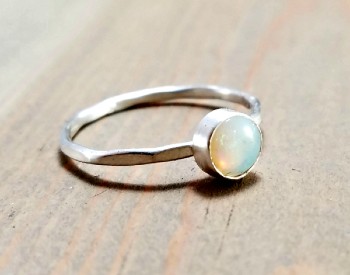 October
October
October has two gemstones as its birthstones: opal and tourmaline. Both of these stones come in an array of colors.
Tourmaline is the modern birthstone of October. Tourmaline can be found in such an array of colors. Tourmaline is a complex silicate that contains boron. It usually forms in “pencils” within granite and can be found in east African, Afghanistan, Sri Lanka, Greenland, Mozambique, Nigeria, Burma, Russia, India, Brazil, Madagascar, Italy and parts of the US.
Tourmaline is sometimes known as the “peace stone”. It is believed to ease fear and carries the virtue of unconditional love and friendship
Opals are the traditional birthstone for October. Opal derives from the Greek “opallos” meaning “to see a change” of color. Opal gemstones vary widely in color from milky white all the way through to black. Opal is a hydrated form of silica formed thousands of years ago when percolated rainwater, carrying dissolved silica is trapped in cracks within the rock. It then evaporates leaving only the silica, this hardens and through the natural forces of molding and pressure forms into opals. Opals are amorphous, meaning they have no crystal structure, and they contain up to 20% water trapped within their structure. Opals are divided into five main categories, white, black, fire, boulder and crystal. They are found mainly in Australia but also Mexico, parts of the US, Brazil, Canada and Ethiopia.
Opal has always been associated with love, passion and desire. It is said to bring out loyalty and faithfulness.
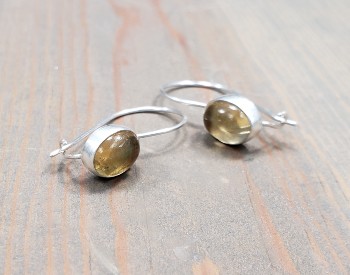 November
November
November’s birthstones are topaz and citrine.
While topaz is available in an array of colors, yellow or orange is the color most commonly associated with the stone as a birthstone. Blue topaz is also an enduring favorite. Topaz is an aluminum silicate and is the hardest of the silicate minerals. Topaz comes from the old Greek name for a small island in the Red Sea, Topzios. The island never actually produced topaz but once was the source of peridot, which has been confused with Topaz in the past before modern mineralogy reclassified it. Topaz is said to balance the emotions and provide protection against greed. It is also the symbol of friendship, love and affection.
A member of the quartz family, Citrine ranges in color from pastel yellow through golden orange into dark, brownish orange. The name comes from the Latin word for “yellow”. Citrine supposedly guides energy, warmth and hope.
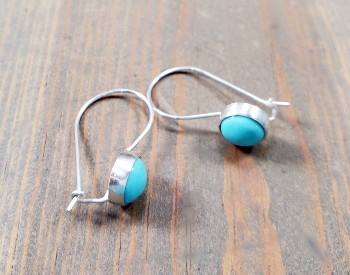 December
December
There are three birthstones for December: turquoise, zircon and tanzanite. Some sources also list blue topaz as an option for December. White these stones come in a variety of colors, the most common for each is blue.
Tanzanite was discovered in Tanzania in the late 1960s and, as yet, has only been found in this region. It was named by Tiffany & Co. after the country in which it was discovered. Tanzanite may be blue or purple, but stones that are medium-dark in tone with a rich, vivid saturation and violet blue shade are the most highly prized and expensive. Tanzanite was added to the modern birthstone list in 2002.
Zircon is considered the oldest mineral on earth - 4.4 billion years old. Most production is from Australia. Zircon comes in a variety of colors (its name derives from the Arabic words “zar” and “gun,” which mean “gold color”). In addition to gold, it is also found in yellow, orange, brown, green, red, colorless, and of course blue. Blue zircon generally represents the month of December. Most blue zircon is heated. Zircon is believed to increase one’s self-confidence and motivation and to provide guidance.
Turquoise is one of the oldest known gemstones. Its name comes from the thirteenth century French meaning “Turkish stone.” Turquoise stones vary in color depending on where they are mined. Experts can often look at a turquoise stone and identify the mine where they have been harvested. Real turquoise is becoming increasingly rare; many mines have closed. Other stones such as howlite are often dyed and passed off as turquoise. This is known as reconstituted or chalk turquoise. Avoid it. Natural turquoise is fairly soft. Most natural turquoise used for jewelry is stabilized.
